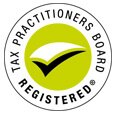Good CGT records can save you money
Congratulations! Your investment has done well, and you’re cashing in. You’re happy, and so too is the ATO. That substantial capital gain has brought wealth and a hefty tax bill. Sharing might be part of the deal but when it comes to your hard-earned profits, you might prefer to keep the ATO’s share to a minimum. Keeping good records will help do this. Here are tips to help you hold onto more of your windfall and avoid that hefty tax bill.
How much did your investment really cost?
Good record-keeping is essential; it helps your accountant ensure that you pay no more tax than you must. You probably already know that what you get paid for your investment isn’t necessarily your gain.
Basically your ‘gain’ on an investment is what you get less what it cost you, but do you really know what it cost you?
The most obvious cost to keep a record of is the asset purchase price or ‘acquisition cost’ but there are some lesser-known costs that are often forgotten.
Keep records of anything falling under these four categories as well:
1. Incidental costs of acquisition
These are costs directly associated with acquiring the asset, including such things as:
» Fees paid to brokers, auctioneers, or accountants
» Stamp duty paid on the purchase
» Advertising costs incurred when acquiring the asset
» Conveyancing fees or conveyancing kit costs
» Brokerage fees if buying shares
2. Non-capital ownership costs
You can sometimes add certain ownership costs to your cost base if they weren’t previously claimed as tax deductions. These include:
» Interest on money borrowed to acquire the asset (but again only if it has not already been used as a deduction on income)
» Maintenance, repair, or insurance costs
» Rates or land tax (if the asset is land)
3. Capital expenditure on improvements
Your expenses covering things to increase or preserve the value of the asset are also relevant. Some examples include:
» Costs incurred for zoning changes, whether successful or not
» Capital improvements, such as renovations or structural changes
4. Costs of establishing, preserving, or defending ownership
Hopefully you don’t have too many legal expenses but if you do they too can be taken off the gain. If you have incurred costs related to defending your ownership in court or any legal fees incurred in a dispute over title keep a record of them as they will reduce the gain.
You’ve identified all the costs, but can we further reduce the gain?
That capital loss you made earlier in the year wasn’t nice but there is a silver lining: it can offset that gain. If that’s not enough to wipe out the gain, dig deeper into your records.
Was there any unused loss in a prior year? We can use that too!
Keep note of when you bought it
If you bought that asset prior to 20 September 1985, yippy no CGT! If you bought it over 12 months ago only half the net gain (after costs and losses) is assessable. So, if you’re thinking of selling an asset but haven’t held it for a year, consider hanging on to it just that little bit longer.
Good CGT records…
This information has been prepared without taking into account your objectives, financial situation or needs. Because of this, you should, before acting on this information, consider its appropriateness, having regard to your objectives, financial situation or needs.
FINAL THOUGHTS
By understanding what the costs are and keeping thorough records, you can legally minimise your CGT liability. Speak to us about what things you should keep records of to take full advantage of any applicable deductions and exemptions.
Concessional Super Contributions vs Mortgage Paydown: What’s the smarter move?
If you have some extra cash, you might be deciding whether to make a concessional contribution to your super fund or use it to pay down your mortgage, whether on your home or holiday house. Both strategies have advantages, but the right choice depends on your personal situation. Let’s take a closer look at the options.
Option 1: Pay down your mortgage
Putting extra money towards your mortgage helps reduce non-deductible debt ie, debt carrying interest that isn’t tax deductible. This strategy can be particularly appealing if you value certainty or plan to free up cash flow soon. Key advantages include:
» Guaranteed savings: every extra dollar paid directly reduces your interest costs. For example, on a 5% loan, an additional $10,000 payment saves you $500 a year. This is essentially a risk-free 5% return.
» Increased equity: reducing your loan balance builds equity in your property, which can improve your financial flexibility if you need to borrow against it or decide to sell.
» Improved cash flow and peace of mind: with a smaller loan, your minimum repayments shrink, giving you more breathing room and financial security.
The downside is that unlike super contributions, there are no immediate tax benefits. Over the long term, investment returns from a well-diversified super portfolio often exceed typical mortgage interest rates.
Option 2: Concessional super contributions
Concessional super contributions, like salary sacrifice or personal deductible contributions, boost retirement savings and cut personal tax. They’re especially appealing for people near retirement. Super may be partly or fully accessible after 60 at which time withdrawals are generally tax-free and can be used to repay loans whilst also having enjoyed a tax break on contributions.
Key advantages include:
» Tax benefits: contributions are taxed at 15% in super (or 30% for some high-income earners), often below your marginal rate.
» Long-term growth: super investments in growth assets, plus a concessional tax rate of 15% on asset income in super, can significantly grow your retirement savings.
The downside is that funds are locked away until age 60 and are generally unavailable for emergencies. Market fluctuations, such as those seen recently, may also impact your superannuation savings.
Case study
Brian has $10,000 (after tax) of surplus cashflow each year. He is considering using this surplus cashflow to pay down his mortgage on a holiday home or making a personal deductible contribution to super. He is 55, plans to fully retire at 60 and is on the 39% tax bracket (including Medicare Levy). His mortgage is incurring interest at 5.6%.
Option 1: Pay down mortgage
If Brian makes an additional $10,000 one-off mortgage repayment each year for the next five years, he will have about $56,000 less debt than he would otherwise have. This reduction includes the interest that would have been accrued but for the reduction in the loan over the five years.
Option 2: Make concessional super contribution
If Brian can forgo $10,000 of after tax cashflow he can potentially make a personal deductible contribution of approximately $16,390 and be in the same after-tax cashflow position. As he is paying 39% tax, a $16,390 deductible super contribution will reduce his tax by $6,390 meaning his cashflow only reduces by $10,000 per annum.
Let’s assume a net super contribution of $13,930 ($16,390 less 15% contributions tax) is invested each year into super for the next five years. Let’s also assume his super grows at 5.6% net per annum.
In this case Brian will have about $78,000 more in super than what he would otherwise have but for the deductible super contributions. After five years Brian is aged 60 and if he is also retired, he is free to withdraw any amount of super, tax-free, to pay down remaining debt.
THE VERDICT
Chat with us to find out which option suits you best. There is no one-size-fits-all answer. Paying down your mortgage offers security and peace of mind. Making extra concessional super contributions can deliver powerful tax benefits and long-term growth in retirement savings.
Whether you’re focused on financial flexibility now or building wealth for later, we’re here to help you weigh the pros and cons and make the most of your money.
Writing a will in a tax-effective manner
When a person writes a will they usually leave their assets to their children – and usually in equal shares. And when they first write their will their children may be young – and they may also be relatively young when they later update it. However, there is a potential capital gains tax (CGT) issue lurking here.
In this increasingly globalised world, when the children do inherit the assets, they may be living overseas. In this case, if they are considered a foreign resident for tax purposes at the time they become entitled to the assets of the estate (or their share of them), instead of the roll-over applying, it will trigger an immediate CGT liability for the deceased in their final tax return. And this will usually be paid by the executor from estate assets – thereby diminishing the amount of the estate that would otherwise be available to the beneficiaries.
And in this case the amount of the capital gain (or loss) is determined by the asset’s market value at the time of the deceased’s death and the deceased’s cost for CGT purposes.
However, there is a very important carve out from this rule. It does not apply if the bequeathed asset is Australian real estate (or other “taxable Australian property” as defined). This is because such assets always remain subject to CGT – regardless of the residency status of the taxpayer. Moreover, any dealings in them can usually be traced by the ATO (especially in the case of land).
However, the rule would, for example, apply to shares on the ASX and ordinary investment units in unit trusts.
Note that there are special rules that apply to shares in a company or units in unit trust where more than 10% of the shares or units are owned and more than 50% of the value of the assets of the company or unit trust is real property. (But these rules can be very complex.)
The upshot of all this is that when writing your will it is important to get good tax advice so that it can be structured and documented in a tax-effective way – and, broadly speaking, this will entail giving your executor a high degree of flexibility in how estate assets will be distributed among your beneficiaries.
However, if you are already locked into a will and you find yourself in this situation, there are a few things you can do to ameliorate the effect of this rule.
And by the way, in writing a will it is probably not a bad idea to give your executor the power to grant someone a right to occupy your home after your death. This is because it is another potential way to access the CGT exemption for an inherited home.
So, if you are writing your will or looking at updating one, come and have a chat to us about it first so that we can take you through some of the ins-and-outs of writing it tax-effectively.
Binding Death Benefit Nominations Explained
When it comes to superannuation, many people assume that their retirement savings will go to their loved ones when they pass away. Sadly, this isn’t always the case. Unlike other assets that are covered by your will, your superannuation is handled separately, and if you want to ensure it goes to who you want, you need a binding death benefit nomination (BDBN).
What is a binding death benefit nomination?
A BDBN is a formal instruction you give to your superannuation fund, telling them who should receive your super when you die. The fund must follow your instructions if your nomination is valid. This gives you certainty that your money will go to who you want.
If you don’t have a binding nomination, your super fund will decide who gets your money. This means your super could be distributed differently from what you intended. Without a valid nomination, your fund will usually follow set rules and laws about dependants.
The three-year expiry rule
A BDBN generally expires every three years. This means you need to renew it regularly to keep it valid. If your nomination expires and you haven’t updated it, your super fund will decide who gets your money when you pass away.
To avoid this, many people set reminders to review their nomination every few years. Major life events such as marriage, divorce, or having children are also opportune times to review your BDBN.
Non-lapsing binding nominations
Some super funds offer non-lapsing binding nominations, which do not expire. Once you make a valid non-lapsing nomination, it remains in place unless you choose to change or cancel it.
However, not all super funds offer this option, and each fund has its own rules about how non-lapsing nominations work. It’s important to check with your fund to see if you can make one and whether any conditions apply.
Binding nominations in SMSFs
If you have a self-managed super fund (SMSF), the rules around BDBNs can be different. Unlike large super funds, where trustee discretion is limited by the rules of the fund and superannuation laws, SMSFs can have more flexibility.
Some key differences include:
» No automatic expiry: In many SMSFs, binding nominations do not expire unless the trust deed specifically states otherwise. This is different from retail and industry super funds, where nominations often expire after three years.
» Customised rules: The rules about binding nominations in an SMSF depend on the trust deed, which is the legal document that governs the fund. Many SMSFs allow non-lapsing nominations, while others may require regular updates. Also, some
SMSFs allow cascading nominations ie, instructing the fund to pay a death benefit to a secondary beneficiary if the primary beneficiary predeceases the member.
» Trustee control: Since SMSF trustees are usually fund members themselves, there can be potential conflicts of interest when deciding how to distribute super benefits. A well-structured binding nomination can help prevent disputes among
family members.
If you have an SMSF, it’s crucial to check your trust deed and ensure your nomination aligns with the fund’s rules.
Who can you nominate?
When making a binding nomination, you can’t just choose anyone – you must nominate one or more ‘eligible beneficiaries’. These include your:
» Spouse (including de facto and same sex partners)
» Children (including adopted or stepchildren)
» Financial dependants (such as someone who relies on you financially)
» Interdependents – someone you share an interdependent relationship with (such as a person you live with, have a close bond with, and where one or both of you provide financial assistance, domestic support, and personal care)
» Legal personal representative (your estate, so your super is distributed according to your will)
If you nominate someone who isn’t eligible, your nomination will be considered invalid, and the super fund trustee will decide who receives your super.
How to make a valid binding nomination
To ensure your nomination is legally binding, follow these steps:
1. Check your fund’s rules: Different funds have different requirements for binding nominations.
2. Complete the required form: Your super fund will have a specific binding nomination form you need to fill out.
3. Nominate a dependant or legal personal representative.
4. Ensure the proportions add up to 100%.
5. Sign and date it in the presence of two independent witnesses (over 18 and not beneficiaries).
6. Submit the completed form to your super fund.
Final thoughts
A BDBN is an essential tool for ensuring your superannuation is distributed according to your wishes. If you don’t have one in place, or if yours has expired, your super fund may decide who gets your money – and it might not be who you intended.
Whether you choose a standard nomination with a three-year expiry, a non-lapsing nomination, or an SMSF-specific arrangement, keeping your nomination up to date is key. Take the time to review your super fund’s rules and ensure your hard-earned super goes to the ones you love.
Small-scale subdivision and property development
So, you have decided to knock down your home and to build a couple of townhouses instead – and maybe live in one (but will just wait and see how things pan out). Likewise, you may have decided to subdivide your large backyard to do a similar thing.
In another case, you may have bought yourself a large block of land down the coast or in the country on which to build a holiday home (or your dream retirement home), but have now decided to build some houses on it to sell as the market is hot in that region. (And you know how to manage a project; you have been doing it all your working life.)
In all of these scenarios, the ATO may take the view that you are engaging in small scale property development and that, as a result, your profits from this activity should be taxed as ordinary business profit (and possibly at the top rate of tax), and not just merely as a concessionally taxed capital gain.
Furthermore, where you may have “ventured” land into a property development project, the capital gains tax (CGT) laws will apply to capture any capital gain (or loss) made on that land up until that time (but provided the land was not exempt from CGT, such as in the case of a home).
But there is one big advantage in being taxed as a property developer – you can generally claim your deductible costs each year as you incur them, and particularly interest on any money borrowed for the venture.
On the other hand, if you are merely subdividing part of your backyard and selling it you will only be subject to CGT in respect of any gain or loss you make – and, what’s more, you can’t claim the CGT exemption for a home in this case.
And in the case of a knockdown-rebuild of a home, where you move back into and make it your home in the required time periods, there will generally be no CGT consequences (albeit, one day the ATO may look more closely at this this rule if it considers it to be badly exploited).
In relation to GST, it generally doesn’t apply to small-scale property developments unless you’re operating a business and registered for GST – or to put it another way, for one-off projects, GST is unlikely to apply, but subdividing and selling multiple lots could push you into GST territory.
But the application of GST to small-scale property developments is a complicated area.
In short, the issue of how small-scale property development activities are taxed is complex – and will depend on the exact circumstances of the case.
It’s vital to come and speak to us if you are considering undertaking such activity – or have already done so.
Click to view our Glance Consultants PDF Newsletter via PDF









